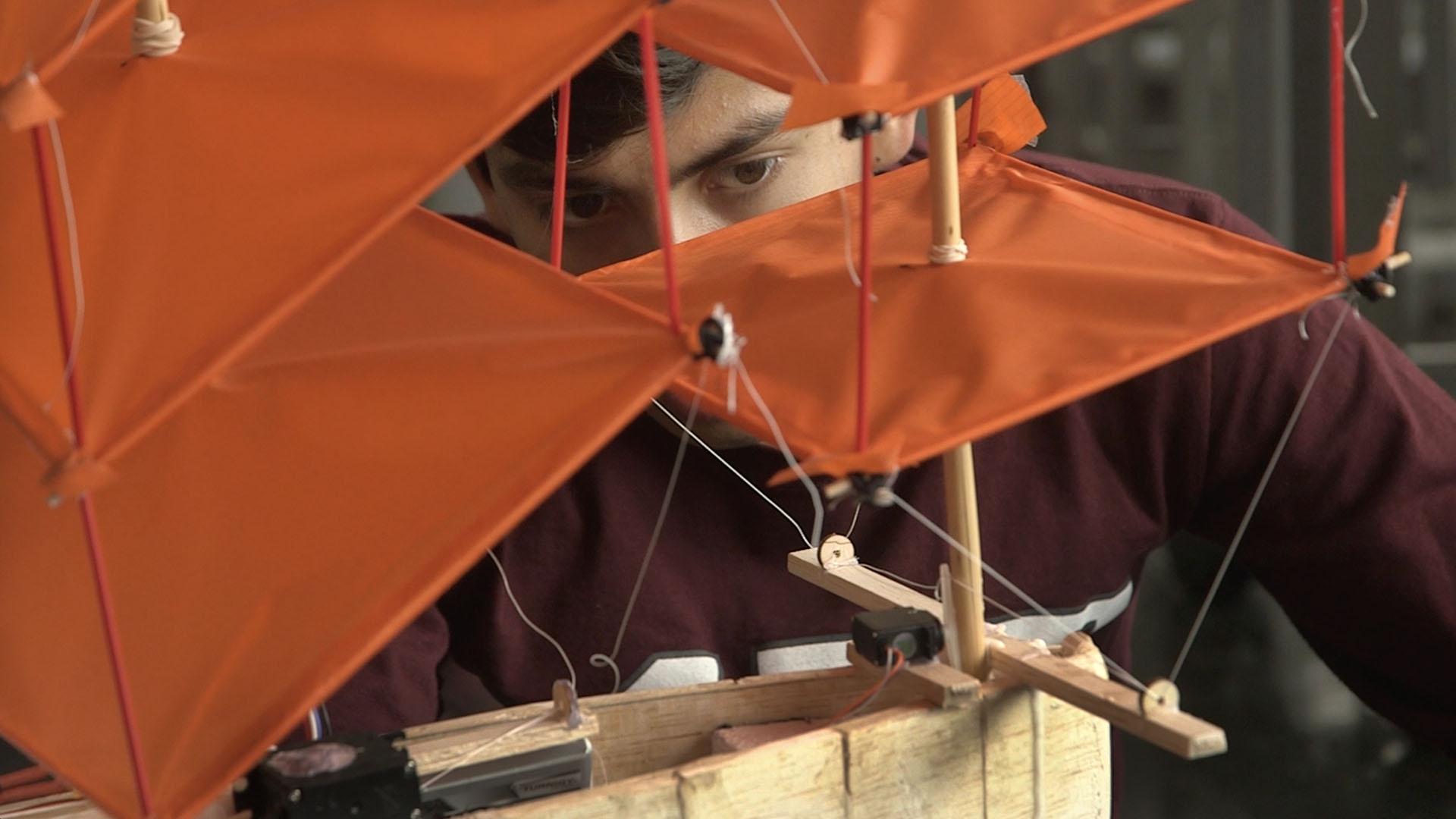
MechE Video Library
Learning Through Creation
Class 2.00a, Fundamentals of Engineering Design: Explore Space, Sea and Earth, empowers first-year students to build machines early in their academic careers at MIT.
MIT Meche Video Library

A team of MIT engineers and naval officers led by Professor Henrik Schmidt developed a navigational method for autonomous vehicles to navigate accurately in the Arctic Ocean without GPS.
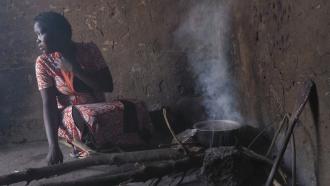
Millions of people die each year as a result of soot or smoke inhalation from these wood-burning cookstoves. A team of students from MIT’s Department of Mechanical Engineering and MIT D-Lab are helping a start-up in Uganda manufacture charcoal briquettes that produce a cleaner burn, minimizing these health risks.
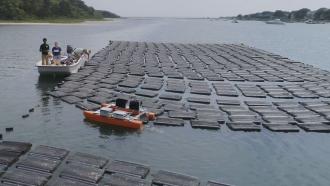
Working directly with oyster farmers, MIT students are developing a robot that can flip heavy, floating bags of oysters, helping the shellfish to grow and stay healthy.
As overpopulation and lack of rainfall fuel a crisis-level need in rural India for affordable drinking water, PhD candidate Natasha Wright and Assistant Professor Amos Winter work to design a low-cost desalination system, guided by insight from their extensive in-the-field research.

Mining minerals found 15,000 feet below sea level could help secure a low-carbon future, but at what cost? Researchers including Thomas Peacock, professor of mechanical engineering at MIT, are racing to understand the environmental impact of deep-sea mining.

A “failed experiment” became a life-saving discovery by MIT Professor Ioannis V. Yannas and his colleague Dr. John Burke when their search for a better way to treat severe burn victims led to the discovery of organ regeneration.
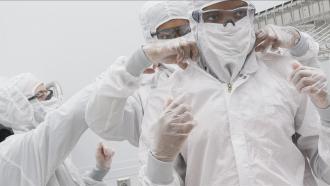
Students compete to design a compression-resistant nanoscale material — and win possibly the world’s smallest trophy.
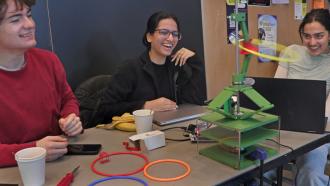
MIT Mechanical Engineering students in Professor Sangbae Kim’s class explore why certain physical traits have evolved in animals in the natural world, then extract those useful principles, which are applicable to robotic systems, to solve such challenges as manipulation and locomotion in novel and interesting ways.
Betar Gallant, associate professor of mechanical engineering at MIT, utilizes electrochemical reactions to develop new sustainable technologies, including systems that capture carbon dioxide emissions and produce higher-energy rechargeable lithium-ion batteries for electric vehicles.

In class 2.702 (Systems Engineering and Naval Ship Design), naval officers and other graduate students get hands-on experience in project management skills that will be central to their future careers.

Emily Satterfield ’22 reflects on her experiences finding her own path at MIT by channeling her creativity and pursuing her passions as a mechanical engineering student.
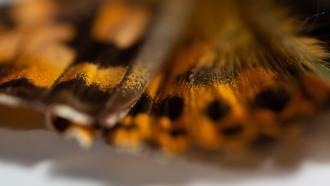
In class 2.788, students explore how mechanics, structure, and materials intersect with biological systems by studying butterflies at every stage of their metamorphosis.

Recent doctoral graduates from MIT’s Department of Mechanical Engineering reflect on how they overcame challenges during their time as graduate students.
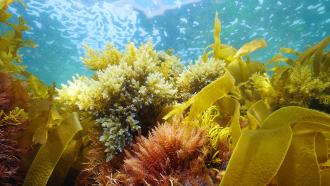
PhD candidate Charlene Xia is developing a low-cost system to monitor the microbiome of seaweed farms and identify diseases before they spread.
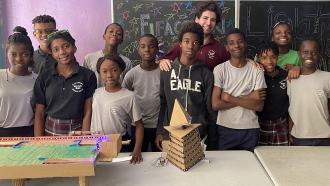
While taking a leave from MIT during the Covid-19 pandemic, mechanical engineering student Eli Brooks taught engineering product design to children at the Have Faith Haiti Mission & Orphanage in Port-au-Prince, Haiti, and uncovered a newfound passion for teaching and life along the way.
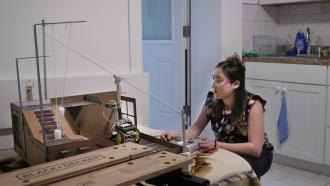
Faculty and staff of 2.007, Design and Manufacturing I, reworked the mechanical engineering class and its famous final robot competition so students could participate remotely.
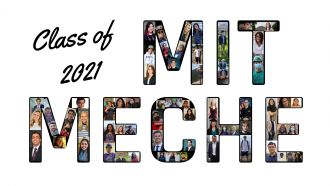
Join us in congratulating our 2021 graduates.
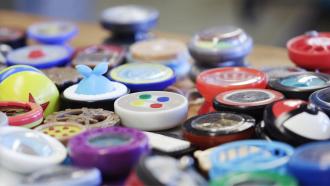
Students learn the fundamental principles of manufacturing at scale by designing and producing their own yo-yos. Instructors stress the importance of sustainable practices in the global supply chain.

The life and legacy of senior lecturer emeritus George Hatsopoulos. An expert in the field of thermodynamics, Hatsopoulos founded Thermo Electron and served as a life member emeritus of the MIT Corporation.
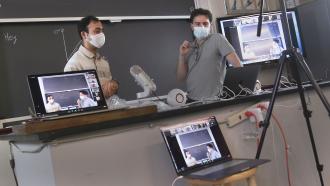
As students return for a semester with mostly remote learning, instructors introduce new innovative methods of teaching hands-on classes which may inform educational best practices for years to come.
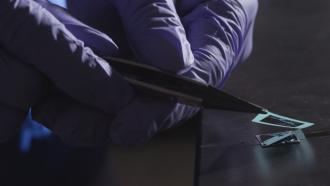
Jeehwan Kim, associate professor of mechanical engineering at MIT, is using his background in materials science to build a physical neural network and produce cheap semiconductor wafers – technologies that could help bring the artificial intelligence power of super computers to handheld devices.
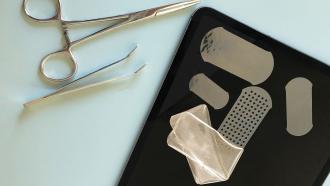
MIT engineers led by Associate Professor Xuanhe Zhao have designed a double-sided tape that can seal tissues in just five seconds. The tape could eventually replace surgical sutures, which don’t work well in all tissues and can cause complications in some patients.
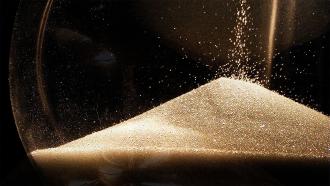
Associate Professor Ken Kamrin’s model of granular material flow could impact how we interact with everything from sand and soil to pills and industrial materials.
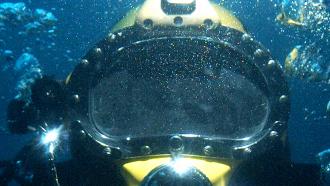
Just returning from 15 days living undersea as part of Fabien Cousteau's Mission 31 project, MechE alumna Grace Young '14 reflects on her experience.
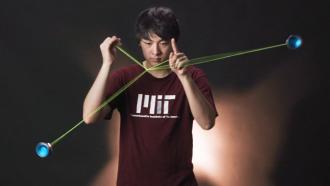
Six-time national yo-yo champion and rising senior Alex Hattori explores his passion for yo-yos at MIT.
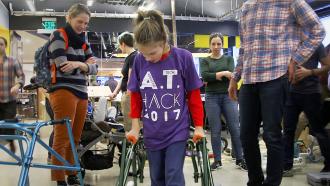
MechE students use their knowledge of mechanical engineering to design an improved walker for 9-year-old Lilly and gain new perspective about how assistive technologies can improve the lives of others in the process.
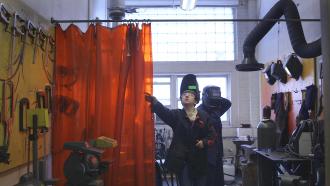
In MIT D-Lab class 2.729, Design for Scale, MIT students work with clients in the developing world to manufacture products in a more cost-efficient and effective way – from ambulances in Tanzania to an irrigation pump in Nepal.
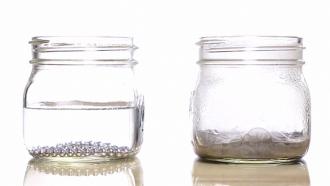
2.014: Engineering System Design/Development: Take a peek inside an MIT class that has the feel and vibe of a hardware startup. The creativity, deadlines, teamwork, and passion are all here.
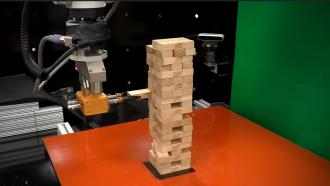
Using machine-learning and sensory hardware, Alberto Rodriguez, assistant professor of mechanical engineering and members of MIT's MCube lab, have developed a robot that is learning how to play the game Jenga®. The technology could be used in robots for manufacturing assembly lines.

In class 2.00b, Toy Product Design, offered by MIT’s Department of Mechanical Engineering, first-year students get hands-on engineering and product design experience while developing a prototype for a new toy.
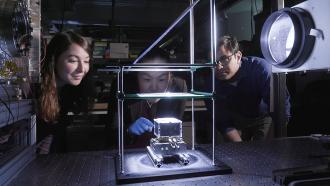
A device developed by Evelyn Wang's team harvests clean drinking water from vapor in the air, even in the most arid conditions.
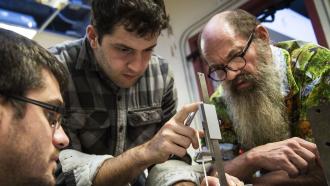
Mechanical engineering students from MIT work with clinicians from Boston-area hospitals to design cheaper, safer, and more efficient medical devices.
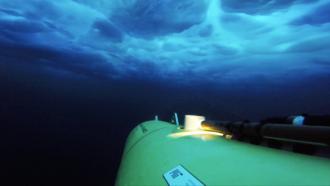
MIT students taking class 2.680: Unmanned Marine Vehicle Autonomy, Sensing and Communications aim to deepen our understanding of the world's oceans by developing artificial intelligence for use on autonomous marine vehicles. Their software is put to the ultimate test while running missions of the Charles River.
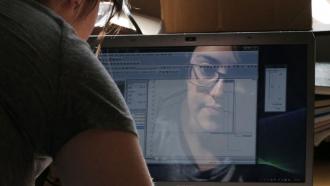
Mechanical engineering students at MIT get hands-on experience conducting a research study from start to finish during Course 2.671’s “Go Forth and Measure Project.” Students are given the freedom to research a topic that interests them – from gummy bears to heart rate and exploding pumpkins.

Anette ‘Peko’ Hosoi finds inspiration while downhill biking at Highland Mountain Bike Park in New Hampshire.
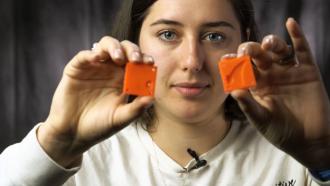
The magic of making is told through the personal stories of MIT students, whose passion runs deep and from an early age.
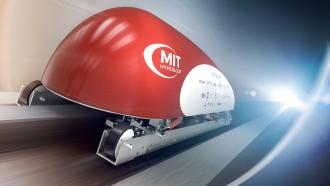
MIT students head to the SpaceX Hyperloop Competition with a concept pod, and a vision for the future of transportation. The MIT Hyperloop Team will be firing their concept pod along a one-mile test track in Hawthorne, potentially bringing the world closer to what SpaceX CEO Elon Musk describes as a “fifth mode of transportation.”
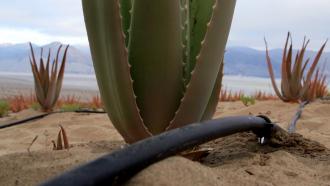
Professor Gareth McKinley, working with colleagues at the Pontificial University of Chile, are harvesting potable water from the coastal fog that forms along one of the driest regions on earth.

Associate Professor Cullen Buie researches a novel method to quickly sort and identify the various strains of bacteria.

Associate Professor Sangbae Kim describes his cutting-edge research in the area of biomimetics, the study of biological systems as models for the design and engineering of robots.
PhD candidate Folkers E. Rojas researches how to mitigate the impact of a Blowout Preventer failure by using a continuous feed of an occluding medium into an uncontrolled well.
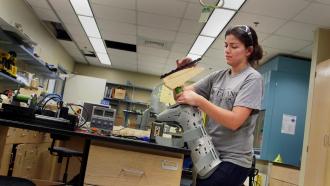
MIT graduate student Katy Olesnavage redesigns the Jaipur Foot to create a high-value prosthesis at a low cost for those in need in developing countries.
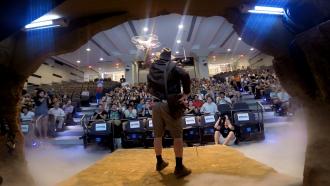
What’s so unique about the MIT MechE spirit? Hear it straight from our students and faculty in this short video.
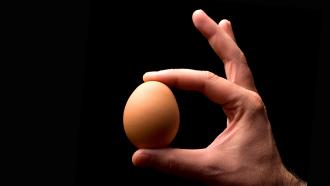
Pedro Reis' work focuses on the mechanics of large deformations of thin structures, towards devising novel functionalities over a wide range of length scales, from the very small to the very large.
Senior Guangtao (Taotao) Zhang, of China, reflects upon her undergraduate journey at MIT as a transfer student and the path to becoming one of the most successful students in her class.
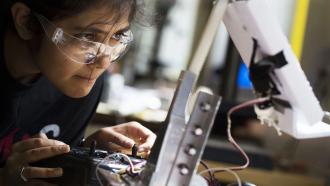
The first hands-on classes to teach students not only how to design an object but also how to build it.

Dr. Heather Beem (PhD ’15) has designed a sensor that could be used by underwater robots to collect data on hydrothermal events or marine life.
Using light to imprint features onto polymer or plastic, Associate Professor Nick Fang's research led his team to disprove the established diffraction limit.
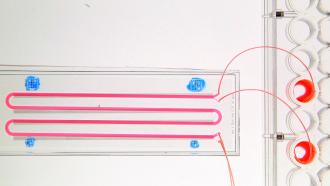
Professor Rohit Karnik addresses real-world challenges with his micro- and nano-fluidics research, uncovering the unique behavior of fluid flow at the molecular level.

Department Head Gang Chen responds to his ALS ice bucket challenge to raise awareness and funding for amyotrophic lateral sclerosis.
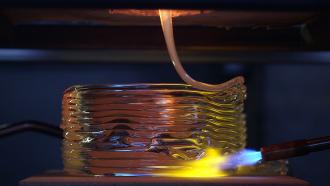
Professor Maria Yang has discovered valuable strategies and techniques for designing both consumer products and complex engineering systems, partnering with NASA, Ferrari, and IBM.
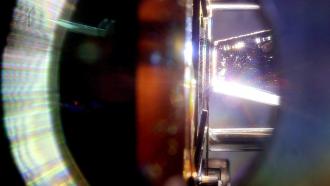
MechE researchers, led by Associate Professor Evelyn Wang, have developed a solar thermophotovoltaic device that experimentally demonstrates a three-fold increase in energy conversion efficiency.
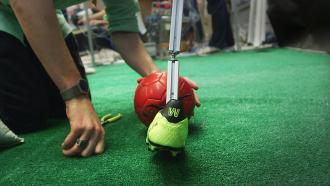
In this year’s Class 2.12: Introduction to Robotics, undergraduate students joined forces to build a robot that can emulate complex human movement with a soccer-theme.
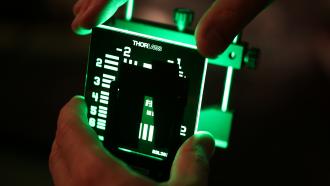
PhD candidate Thomas Milnes explains his thesis research: the development of novel hardware and software techniques -- such as "digital aperture" and "programmable deconvolution" -- for the field of light field imaging.
2.674: One of the first classes to offer undergraduates a hands-on experience with cutting-edge micro/nano engineering.
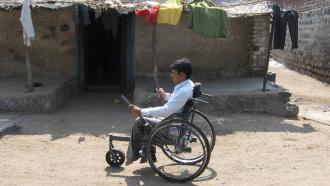
Assistant Professor Amos Winter is named by Technology Review as one of "35 innovators under 35" in 2013. His research group develops disruptive technologies specifically for developing regions where high quality and low cost are equally crucial requirements.

MakerWorks, MechE’s comprehensive community makerspace offering both fabrication and measurement tools, is run by and for students.
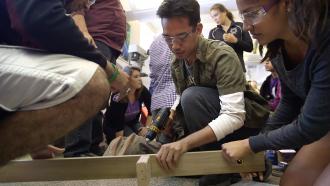
2.009: Product Engineering Processes is a rigorous capstone class for undergraduates, bringing together everything students have learned along the way to develop a market-ready product.

MechE innovates the traditional Mechanics and Materials II class, led by Professor Carlos Portela, by exposing students to leading-edge concepts of nanotechnology, nanomechanics, and metamaterials.









